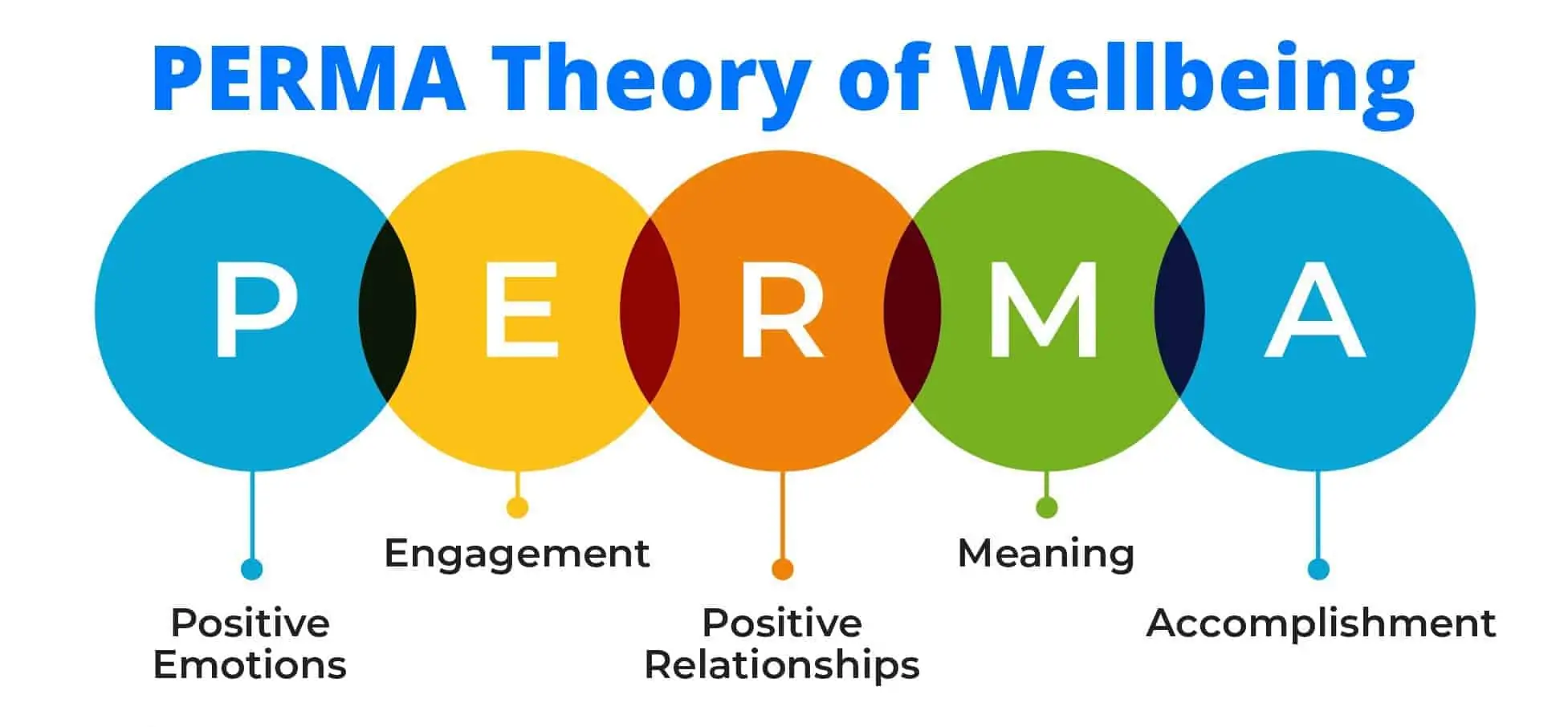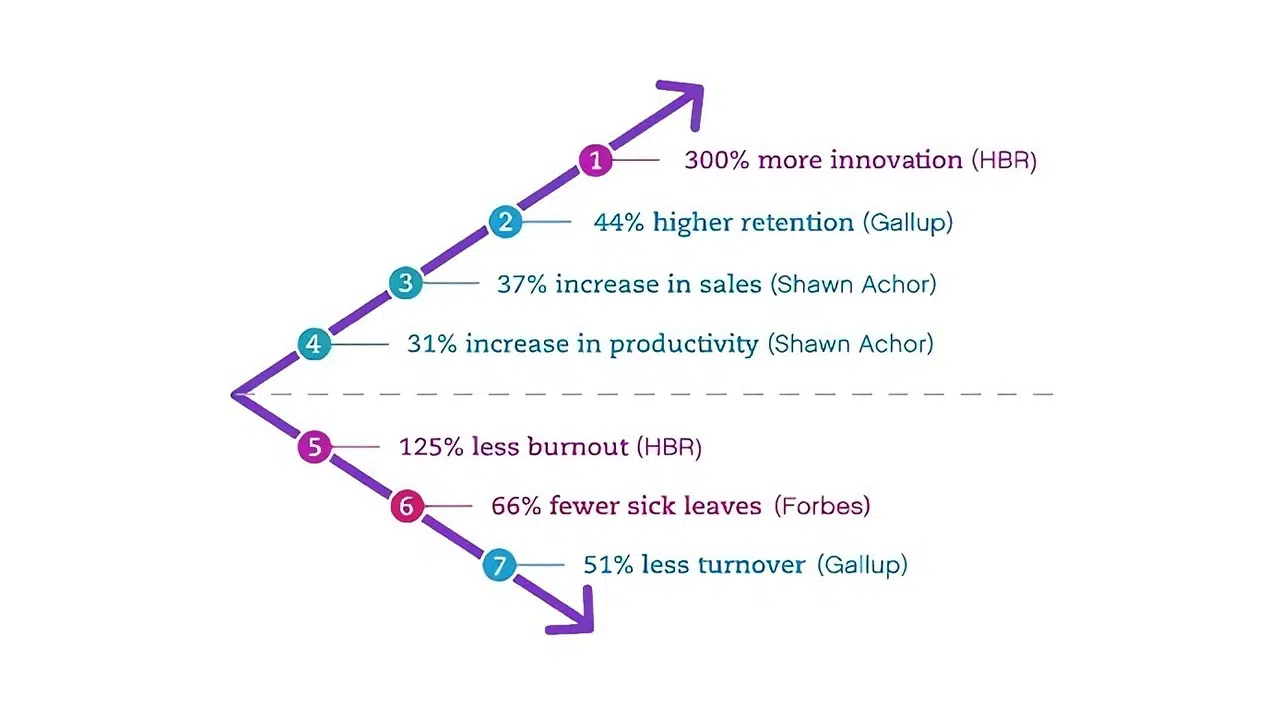Today's Friday • 7 mins read
— By Dr. Sandip Roy.
Most people spend 40 hours a week at work. That’s too much time to be miserable.
Work happiness isn’t just nice to have. Research shows it makes you more productive, creative, and successful.
These science-backed strategies can help you find happiness at work, feel fulfilled in life, and thrive in your career.
The Science Behind Workplace Happiness
Happy workers are 13% more productive than their unhappy colleagues. They don’t work longer hours. They simply accomplish more during their time at work.
Martin Seligman, the founder of positive psychology, discovered something important. Employees get into flow states when they use their top strengths in new ways. This correlates with higher happiness levels.
Work happiness comes from both the individual and the organization. You don’t need to wait for future success to be happy. You can find it right now.
Understanding the PERMA Model
Seligman created the PERMA framework for well-being. It applies perfectly to work environments.

- P – Positive Emotions: Happiness and life satisfaction become factors of well-being, not just end goals. You can cultivate joy, gratitude, and optimism at work.
- E – Engagement: This is about flow—being one with your work, losing track of time, and feeling absorbed in what you’re doing. When you’re in flow, your sense of self vanishes and time stops.
- R – Relationships: Connecting with others and sharing laughter, joy, or purpose provide deep feelings of well-being. People need supportive, positive relationships to sustain well-being.
- M – Meaning: Feeling part of something bigger or serving a greater purpose than yourself transforms ordinary work into meaningful contribution.
- A – Achievement: Accomplishing goals and making progress fuels happiness and motivation.

Find Your Signature Strengths
Signature strengths are the unique positive character traits that define a person’s personality and are essential to who they are. These strengths are stable across different situations and help them be happy and successful in life.
3 Key Features of Signature Strengths are the 3 E’s:
- Essential: the strength feels essential to who you are as a person.
- Effortless: when you enact the strength, you feel natural and effortless.
- Energizing: using the strength uplifts you and leaves you feeling happy, in balance, and ready to take on more.
Positive psychologists say you’re more likely to find happiness in life when you work on your strengths, rather than trying to fix your weaknesses.
People experience flow when they use their top character strengths. Research shows that using strengths in new ways each day for a week made people happier and less depressed after six months (Wood, Linley, & Kashdan, 2011).
- Identify what you do best. Are you good at problem-solving? Communication? Creative thinking? Analysis? Leadership?
- Use strengths differently. If you’re naturally analytical, find new ways to apply that skill. Analyze customer feedback patterns. Study workflow improvements. Examine team dynamics.
- Seek strength-based projects. Volunteer for assignments that match your natural abilities. You’ll perform better and feel more engaged.
Take the VIA Character Strengths Survey.
Create Flow Experiences
Engaging in activities that align with your strengths and interests leads to purpose and well-being.
- Match the challenge to your skill level. Flow happens when tasks are challenging enough to engage you but not so difficult that they overwhelm you.
- Minimize distractions. Turn off notifications during focused work time. Close unnecessary browser tabs. Create a clean workspace.
- Set clear goals. Know exactly what you want to accomplish in each work session. Vague objectives kill flow.
- Get immediate feedback. Find ways to see your progress quickly. Track metrics. Ask for regular input from colleagues or supervisors.
Build Positive Relationships
Work relationships directly impact happiness. You can’t control your coworkers, but you can influence your interactions.
- Practice kindness. Small acts of consideration accumulate. Bring coffee for a colleague. Thank people for their help. Celebrate others’ successes.
- Listen actively. Put away your phone during conversations. Ask follow-up questions. Show genuine interest in your coworkers’ ideas and concerns.
- Collaborate instead of competing. Look for ways to help others succeed. Share credit generously. Offer your expertise when colleagues need support.
- Join or create communities. Participate in lunch groups, hobby clubs, or professional organizations. Social connections at work improve job satisfaction.
Find Meaning in Your Work
People want to feel better while working in their offices. One way this can come is from finding the deeper meaning of the work they are doing. Even ordinary jobs can feel meaningful with the right perspective.
- Connect to purpose. Understand how your work helps customers, colleagues, or society. A janitor at a hospital saves lives by preventing infections. An accountant helps families manage their finances.
- Focus on growth. View challenges as opportunities to develop new skills. Each problem you solve makes you more capable.
- Help others. Mentor new employees. Share your knowledge. Support struggling colleagues. Helping others creates meaning.
- Make improvements. Suggest better processes. Solve recurring problems. Leave your workplace better than you found it.
Develop Psychological Capital (PsyCap)
Psychological Capital, or PsyCap, is a positive state characterized by four key components: hope, efficacy, resilience, and optimism (Luthans and Youssef-Morgan, 2017). It focuses on enhancing mental well-being and performance by fostering these positive psychological resources.
Workplace well-being correlates with inner psychological resources, especially hope and optimism (Kun & Gadanecz, 2019).
- Cultivate optimism. Focus on what’s going well. Look for opportunities in setbacks. Assume positive intent from colleagues.
- Build hope. Set specific goals with clear pathways to achievement. Break large projects into manageable steps.
- Increase resilience. View failures as learning experiences. Develop coping strategies for stress. Build a support network.
- Grow confidence. Celebrate your accomplishments. Keep a record of positive feedback. Acknowledge your progress over time.
Take Control of Your Environment
You have more influence over your work experience than you might think.
- Organize your space. A clean, personalized workspace improves mood and focus. Add plants, photos, or artwork that makes you smile.
- Manage your energy. Schedule demanding tasks during your peak hours. Take breaks before you feel exhausted. Match your work rhythm to your natural patterns.
- Set boundaries. Learn to say no to unreasonable requests. Protect your time for important projects. Don’t check emails after hours unless truly necessary.
- Seek feedback regularly. Don’t wait for annual reviews. Ask supervisors what you’re doing well and where you can improve.
Address Workplace Challenges
Some situations require direct action to improve happiness.
- Communicate problems constructively. If workload, processes, or relationships create stress, discuss solutions with your supervisor. Come prepared with specific suggestions.
- Develop new skills. If you feel stuck or bored, learn something new. Take courses, attend workshops, or shadow colleagues in different roles.
- Change your perspective. Sometimes you can’t change the situation, but you can change how you think about it. Look for lessons, opportunities, or ways to help others.
Long-Term Benefits of Workplace Happiness
Workplace happiness isn’t just about feeling good. Happiness in the form of positive emotions and attitudes attracts increasing attention throughout psychology research because it produces real results.

Happy employees get promoted more often. They build stronger professional networks. They develop better skills because they’re more engaged in learning.
Companies with happy employees see lower turnover, higher customer satisfaction, and better financial performance.
Final Words
The research is clear: workplace happiness is achievable, measurable, and valuable. The only question is whether you’ll take the steps to create it.
You don’t need permission to be happier at work. Begin with small changes. Start today.
Use one of your strengths in a new way today. Thank a colleague. Set a clear goal for your next project. Take a proper lunch break.
Your happiness at work matters. It affects your health, relationships, and overall life satisfaction. You deserve to spend your working hours in a way that brings fulfillment.
• • •
√ Also Read: Psychological Safety: Creating Safe Workplaces In 4 Stages
√ Please share this if you found it helpful.
